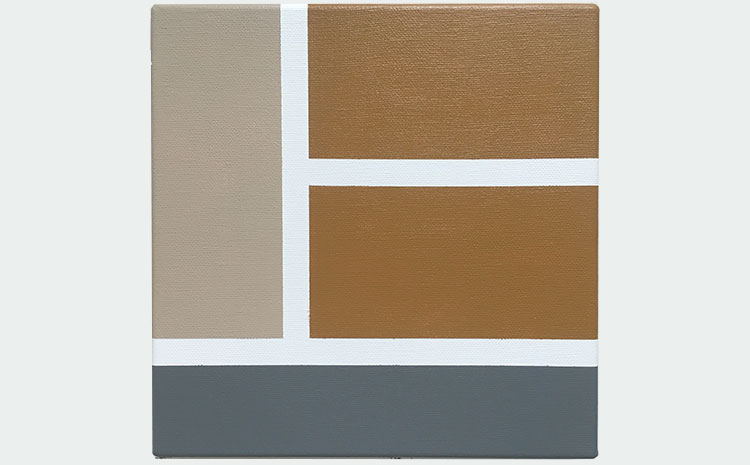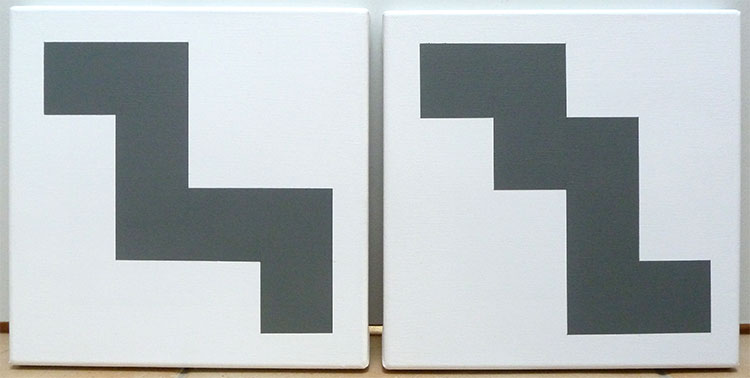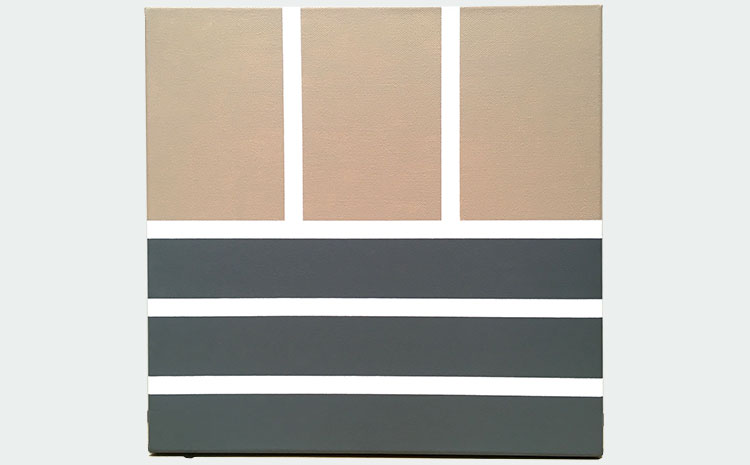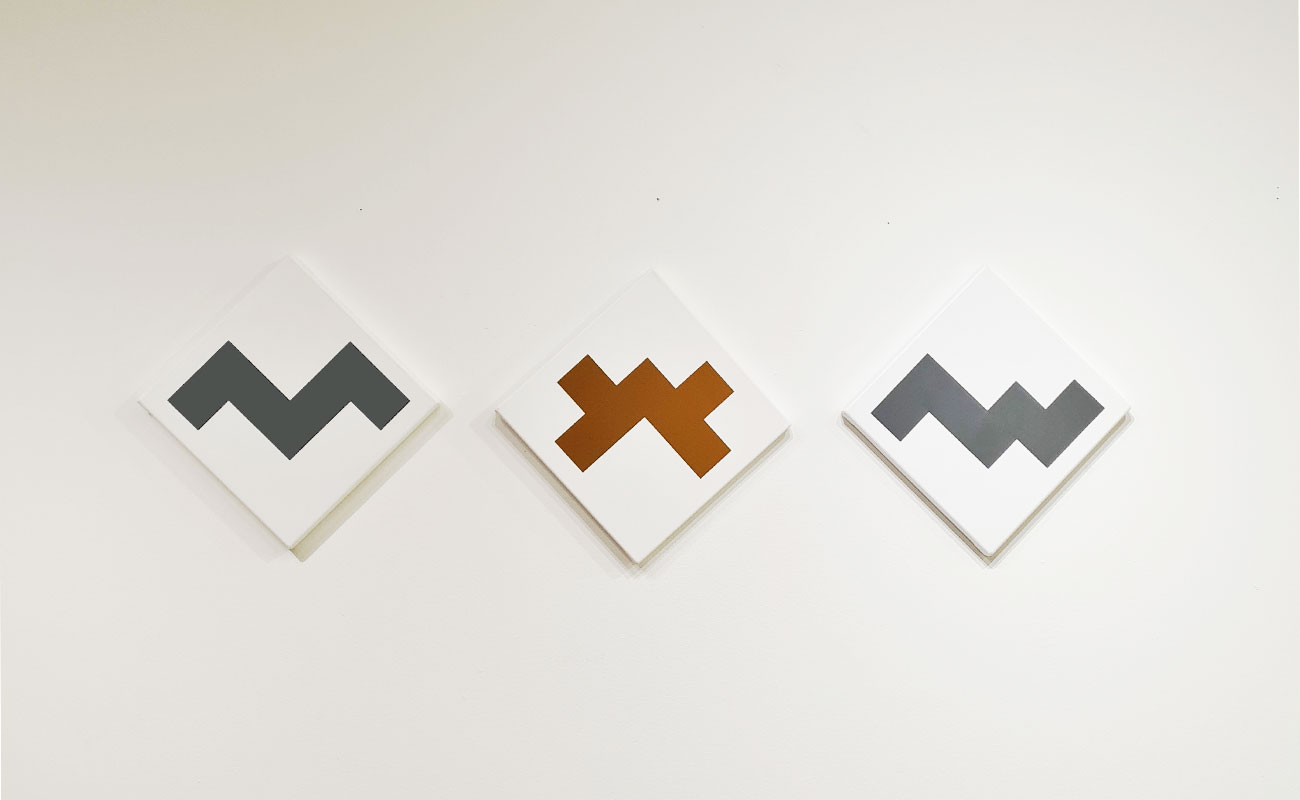“My artistic work is parallel to a scientific inventory, I guess I do this to make my two hemispheres work in collaboration.”
Drawing Inspiration from Science and Abstraction
Jean-Luc Manguin fascination with abstraction stems from his birthplace, a city that underwent complete reconstruction after World War II. The city’s concrete buildings, particularly its churches with their geometric and abstract stained glass, made an indelible impression on Jean-Luc Manguin’s memory. As a self-taught artist, he draws inspiration from a variety of sources, assimilating diverse influences from artists such as Mondrian, Morellet, and Sol Lewitt, among others. With a background in engineering and four decades of experience in public research, his artistic approach is characterized by a scientific, investigative methodology that differs from traditional art creation.
He is also one of the six founders of the Collectif Art Concret – Normandie. The banner image of this article with the three polyominos is from the group’s first exhibition.
Jean-Luc Manguin’s artistic style is minimalistic and geometric, often based on a mathematical concept. He typically works with small to mid-sized canvases and prefers drawing and painting as his mediums of expression. His artwork is created in open series that are intrinsically connected to the natural integers. Thus, as he progresses through each series a step further to the next integer, the format of the canvas or paper may expand, and the number of works in the new step always increases because of combinatorial developments.

“Square Dissection”
Jean-Luc Manguin: The Role of Mathematics in his Creative Process
Jean-Luc Manguin expresses uncertainty about whether the term “inspiration” accurately captures the essence of his creative process. He believes that the romanticized image of the artist associated with inspiration may not reflect the reality of his practice. To illustrate this point humorously, he often jokes that his creative drive only appears when his lungs have emptied completely.
In reality, Jean-Luc’s creative process usually begins with a mathematical inquiry, often starting with a “How many…” question. For instance, he might ask himself, “How many ways can a square be divided fairly into N rectangles?” He approaches art-making with a scientific perspective, which he believes fosters collaboration between the two hemispheres of his brain, akin to taking an inventory.

“Polyominos”
An Artistic Journey Focused on Four Key Areas of Interest
Jean-Luc Manguin has maintained a consistent artistic style over time, with only minor variations. He has introduced changes to his approach, such as incorporating canvas into his work and using computer programs extensively to find answers to his artistic questions. He has also become more focused in his project selection, concentrating on just four specific areas of interest instead of scattering his energy across a broad range of subjects.
Currently, Jean-Luc’s projects include the exploration of irregular quadrilaterals, polyominos, fair dissection of the square, and incomplete grids. These works are a significant source of pride for him, as they have been developed with a clear roadmap and various iterations that reflect his evolving creative process. He has given careful thought to the role of colors in his work, a practical consideration that has added depth and richness to his pieces.

“Square Dissection”
Notable Works and Passion for Art as a Means of Inner Peace and Exploration
Jean-Luc Manguin’s most notable works include his sub-series of 520 small-format drawings, which measure 12×12 cm on A5 paper. This series represents a significant accomplishment and is the culmination of careful planning and execution. He is equally proud of his “Latin squares” series, as one of the drawings was published in a secondary school mathematics textbook, underscoring the intellectual depth and rigor of his work.
As for his aspirations and future endeavors, Jean-Luc does not have a singular, definitive project that he is striving towards. Instead, he continuously pushes the boundaries of his ongoing initiatives to achieve the highest level of success possible. His involvement in art serves several meaningful purposes. Firstly, on a personal level, creating artwork – whether it be drawing or painting – allows him to attain a state of inner peace. This is perhaps due to the necessity of concentration and focus required for the task, which enables him to tune out all external distractions. One could liken this experience to a form of meditation. Additionally, his passion for art has led him to discover numerous mathematical concepts and theories that intersect with his work. Perhaps most notably, however, his involvement in artistic networks has enabled him to establish strong, amicable partnerships with other artists. Participating in exhibitions abroad has afforded him and his wife the opportunity to explore fascinating locales.

“Latin Squares” “Quadrilateral”





